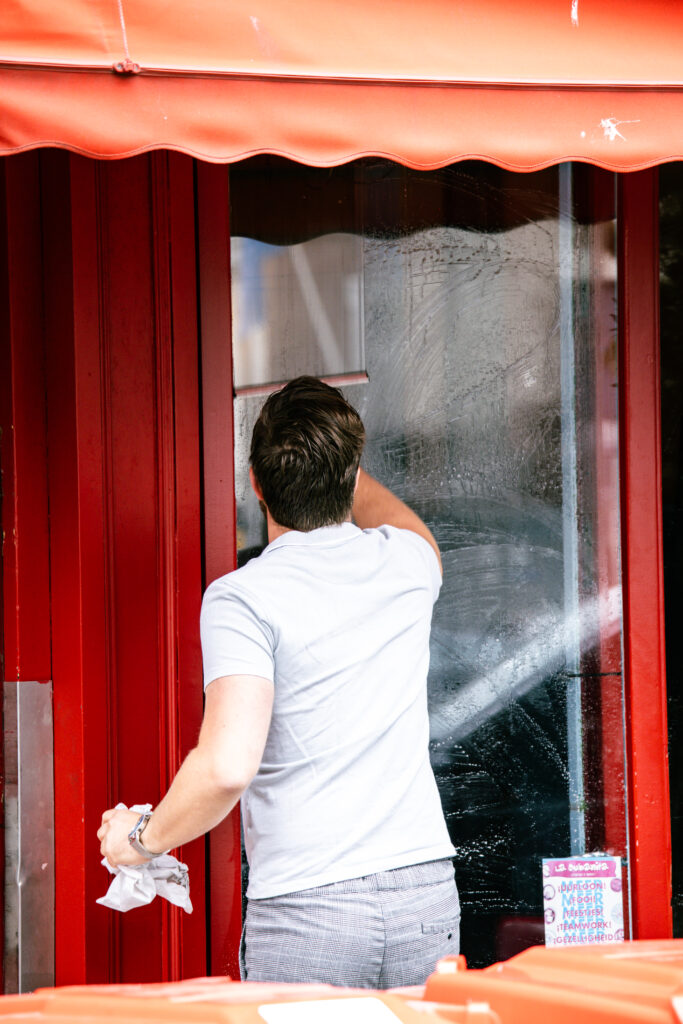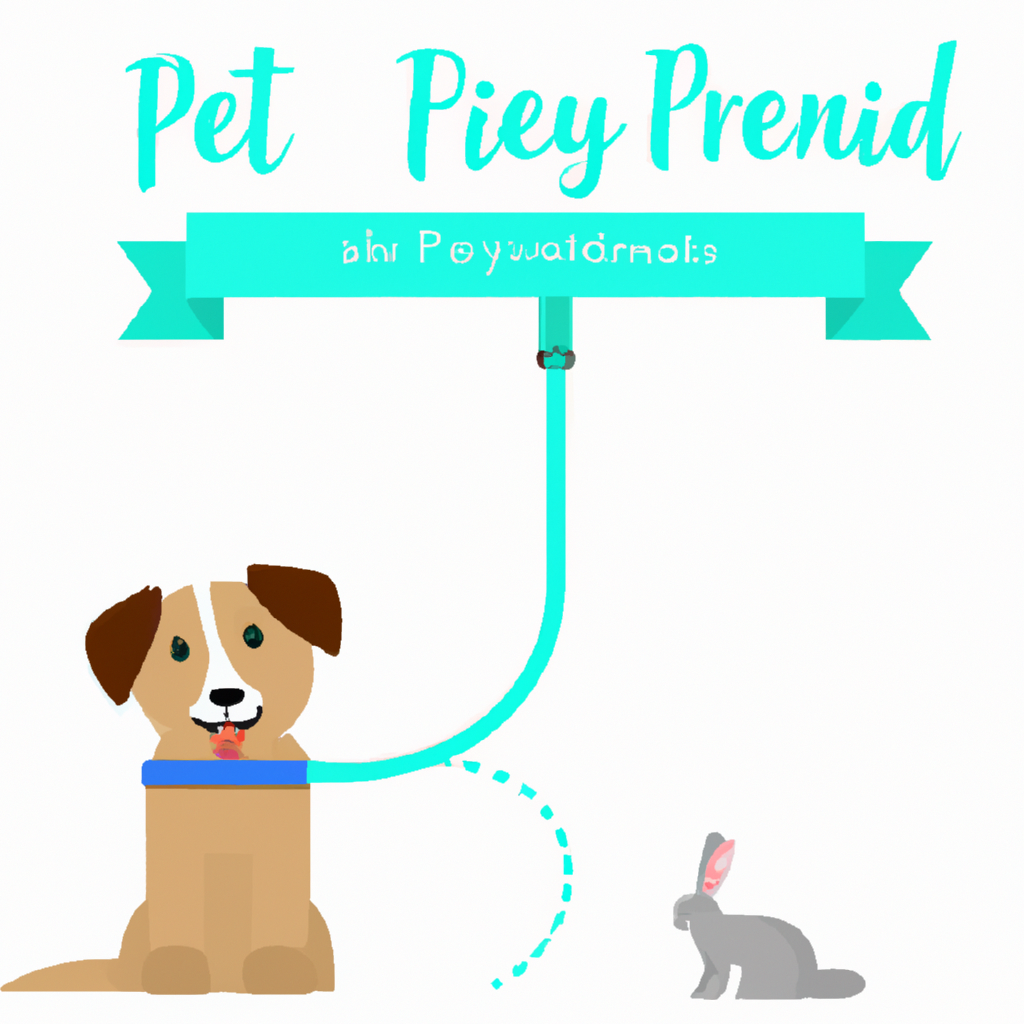When it comes to enjoying a meal out with your furry friend, it’s not just about finding a pet-friendly restaurant, but also ensuring that the environment remains clean and hygienic for everyone. From the moment you step foot into a pet-friendly restaurant, you’ll notice the meticulous efforts taken to maintain a sanitary setting. These establishments have implemented various measures, such as designated pet areas, strict cleanliness protocols, and thorough staff training, to guarantee a safe and enjoyable dining experience for both humans and their four-legged companions. With a commitment to hygiene, pet-friendly restaurants go above and beyond to create a welcoming atmosphere for all guests, furry or not.

This image is property of images.pexels.com.
Proper Cleaning and Sanitization Measures
Regular Cleaning of Dining Areas
Pet friendly restaurants prioritize the cleanliness of their dining areas to create a hygienic environment for all guests. Regular cleaning routines involve thorough sweeping, mopping, and wiping down of all surfaces to remove any dirt or debris. This ensures that the dining areas are free from any potential contaminants that may pose a risk to both humans and pets.
Frequent Disinfection of Surfaces
In addition to regular cleaning, pet friendly restaurants also incorporate frequent disinfection of surfaces to enhance sanitation. High-touch surfaces such as tables, chairs, and counters are given special attention to ensure that they are properly disinfected. This helps to eliminate any harmful bacteria or viruses that may be present, minimizing the risk of cross-contamination and promoting a safe dining experience for everyone.
Proper Hand Hygiene for Staff
Pet friendly restaurants understand the importance of proper hand hygiene in maintaining a clean and safe environment. Staff members are trained to follow strict handwashing protocols, including thorough handwashing with soap and water for at least 20 seconds. Hand sanitizers are also made readily available throughout the premises to encourage regular use among staff and guests alike.
Thorough Dishwashing and Utensil Sterilization
To ensure the highest level of cleanliness, pet friendly restaurants prioritize thorough dishwashing and utensil sterilization. The dishwashing process includes the use of hot water and appropriate detergents to effectively remove any food residues or bacteria. Utensils are then thoroughly sterilized to eliminate any remaining germs or contaminants. This meticulous approach to dishwashing helps to guarantee that each pet-friendly restaurant can serve food on clean and sanitized plates and utensils.
Separate Pet-Friendly and Non-Pet Areas
Designated Pet-Friendly Zones
To cater to both pet owners and non-pet owners, pet-friendly restaurants typically have designated pet-friendly zones within their establishments. These areas are specifically designated for guests with furry companions, ensuring that they can enjoy their dining experience without hindering those who prefer a pet-free environment. Designated pet-friendly zones are often equipped with amenities such as water bowls and pet waste disposal stations to accommodate the needs of pets and their owners.
Strict Boundary Control
Pet-friendly restaurants implement strict boundary control measures to maintain a harmonious coexistence between pet owners and non-pet owners. Clear signage and physical barriers are placed to clearly demarcate the pet-friendly zones and non-pet areas. This ensures that pets are restricted to specific areas, preventing any potential disruptions or discomfort for guests who may have allergies or prefer a pet-free dining experience. Staff members are also trained to enforce these boundaries politely and respectfully.
Regular Cleaning of Pet-Friendly Areas
Pet-friendly restaurants recognize the importance of regular cleaning in their designated pet-friendly areas. Just as with the regular dining areas, these pet-friendly zones undergo frequent cleaning to maintain a high standard of hygiene. Surfaces are thoroughly cleaned and disinfected to remove any pet-related mess, ensuring a clean and enjoyable environment for both pets and their owners.
Strict Pet Policy and Regulations
Proof of Vaccination and Good Health
Pet-friendly restaurants set strict pet policies and regulations to ensure the safety and well-being of all guests. One crucial aspect is requiring proof of vaccination and good health for pets entering the premises. This helps to minimize the risk of disease transmission and ensures that all pets are up to date on their vaccinations to protect both themselves and others. With these policies in place, pet owners can dine with peace of mind, knowing that all the pets in the restaurant are healthy and safe.
Leash and Proper Pet Behavior
To maintain a comfortable and secure environment, pet-friendly restaurants enforce a leash policy and expect proper pet behavior from their furry guests. This policy helps to prevent any potential incidents and ensures that pets remain under control at all times. By requiring pets to be on leashes, restaurants can provide a safe and enjoyable experience for both pets and other guests.
Size and Breed Restrictions
To further ensure the safety and comfort of all guests, pet-friendly restaurants may implement size and breed restrictions. These restrictions are put in place to prevent any potential conflicts or discomfort for both pets and other visitors. By setting such limitations, restaurants can better manage the overall dynamics and create a peaceful environment where everyone can dine in harmony.
Training and Certification for Employees
Knowledge of Pet Hygiene Practices
The staff members of pet-friendly restaurants undergo comprehensive training on pet hygiene practices. They are equipped with the knowledge and skills necessary to handle pets in a safe and hygienic manner. This includes understanding proper cleaning and sanitization procedures for pet-related areas, as well as knowing how to handle and dispose of pet waste appropriately.
Understanding Pet Body Language
Properly interpreting and understanding pet body language is essential for staff members of pet-friendly restaurants. This training allows them to identify signs of distress or discomfort in animals and take appropriate action to address their needs. By recognizing subtle cues, staff members can provide a more comfortable and stress-free experience for pets and their owners.
Emergency Response Training
Pet-friendly restaurants prioritize the safety and well-being of all guests, including their furry companions. As such, staff members undergo emergency response training to ensure they are prepared to handle any unforeseen incidents involving pets. This training equips them with the necessary skills to respond quickly and effectively in emergency situations, promoting a safer environment for both pets and humans.

This image is property of images.pexels.com.
Consideration for Allergies and Sensitivities
Designated Non-Pet Areas
In recognition of allergies and sensitivities, pet-friendly restaurants often designate specific non-pet areas where guests can dine comfortably without exposure to pet-related allergens. These areas are strictly enforced as pet-free zones, ensuring that those with allergies or sensitivities can enjoy their meals without any concerns or discomfort.
Air Filtration Systems
To maintain a clean and allergen-free environment, pet-friendly restaurants invest in high-quality air filtration systems. These systems help to remove pet dander, fur, and other allergens from the air, creating a more pleasant dining experience for all guests. The use of air filtration systems also contributes to better indoor air quality, benefiting both pets and humans who visit the restaurant.
Proper Ventilation
Pet-friendly restaurants prioritize proper ventilation to enhance air circulation and minimize the concentration of allergens. Good ventilation systems allow for the exchange of fresh air, reducing the potential buildup of pet-related allergens. By ensuring efficient ventilation, pet-friendly restaurants create a healthier and more comfortable environment for all guests, regardless of any allergies or sensitivities they may have.
Provision of Hygienic Pet Amenities
Pet Waste Disposal Stations
To maintain cleanliness within pet-friendly areas, pet-friendly restaurants provide convenient pet waste disposal stations. These stations typically consist of waste bags and bins, allowing pet owners to clean up after their furry companions easily. By providing these amenities, pet-friendly restaurants ensure a clean and odor-free environment for all guests, promoting a positive and hygienic experience.
Clean and Secure Pet Rest Areas
Recognizing the need for pet comfort, pet-friendly restaurants often include clean and secure pet rest areas within their establishments. These areas provide a safe space for pets to relax and rest while their owners enjoy their meals. Regular cleaning of these pet rest areas ensures that they remain sanitary and inviting for pets.
Pet Cleaning Products
Pet-friendly restaurants invest in pet cleaning products to cater to the needs of their furry guests. These products include pet-friendly wipes and sprays specifically formulated for pet hygiene. By offering these products, pet-friendly restaurants empower pet owners to maintain cleanliness and ensure the comfort of their pets during their dining experience.

This image is property of images.pexels.com.
Regular Inspection and Monitoring
Scheduled Health Inspections
To maintain a high standard of hygiene, pet-friendly restaurants undergo scheduled health inspections to ensure compliance with regulations and industry standards. These inspections evaluate various aspects, such as cleanliness, food storage practices, and pet policies. By regularly assessing and monitoring their operations, pet-friendly restaurants can identify and address any areas that may require improvement, ensuring a consistently hygienic environment.
Monitoring of Pet Behavior
Keeping a close eye on pet behavior is another crucial aspect of maintaining a hygienic environment in pet-friendly restaurants. Staff members are trained to monitor the behavior of pets within the establishment, identifying any signs of distress, aggression, or discomfort. By promptly addressing such behavior, restaurants can prevent potential incidents and maintain a safe and pleasant environment for all guests.
Quality Control Measures
Pet-friendly restaurants prioritize quality control measures to ensure consistent cleanliness and hygienic practices. This includes regular auditing of cleaning protocols, inspection of dishwashing and sterilization processes, and assessment of staff training and certification. By implementing these quality control measures, pet-friendly restaurants can guarantee that their operations adhere to the highest standards of hygiene, providing a safe and enjoyable dining experience for all.
Staff Expertise in Pet Handling and Care
Pet First Aid Training
Staff members of pet-friendly restaurants undergo pet first aid training to ensure they are equipped with the necessary skills to handle emergencies involving pets. This training covers basic first aid techniques for common pet-related incidents, such as injuries or allergic reactions. By having staff members trained in pet first aid, pet-friendly restaurants can respond quickly and effectively in case of any medical emergencies.
Knowledge of Pet Nutrition
Understanding pet nutrition is essential for staff members of pet-friendly restaurants to provide helpful guidance to pet owners. They are trained to offer recommendations and tips on pet-friendly menu options and portion sizes. This knowledge enables staff members to assist pet owners in making informed choices about their pets’ dietary needs, promoting their overall health and well-being.
Understanding Pet Psychology
To ensure a positive and stress-free experience for pets, staff members of pet-friendly restaurants are educated about pet psychology. This training enables them to recognize signs of anxiety or stress in animals and take appropriate steps to provide a more comfortable environment. By understanding pet psychology, staff members can create a welcoming atmosphere where pets feel at ease, enhancing the overall dining experience for both pets and their owners.

Clear Communication and Guidelines
Display of Pet Policies
Clear communication of pet policies is essential for pet-friendly restaurants to ensure that all guests are aware of the rules and regulations. Pet policies are prominently displayed in visible areas, providing guidance to pet owners and non-pet owners alike. Clear signage and written guidelines help set expectations and enable all guests to enjoy a safe and respectful dining experience.
Educating Guests on Hygienic Practices
In addition to displaying pet policies, pet-friendly restaurants also take the initiative to educate their guests on hygienic practices. This includes providing information on proper pet hygiene, emphasizing the importance of vaccinations, and encouraging owners to clean up after their pets. By promoting hygienic practices, pet-friendly restaurants foster a responsible pet culture and maintain a clean environment for all to enjoy.
Prompt Reporting of Incidents
To ensure the safety and well-being of all guests, pet-friendly restaurants establish a culture of prompt incident reporting. Staff members are trained to respond swiftly to any incidents involving pets, such as accidents or conflicts. By reporting incidents promptly, the necessary actions can be taken to address the situation and prevent any further disruption or harm to guests.
Collaboration with Animal Welfare Organizations
Partnership with Local Shelters
Pet-friendly restaurants often collaborate with local animal welfare organizations and shelters to support their initiatives. This can include hosting adoption events or fundraising campaigns to help find loving homes for stray or abandoned animals. Through these partnerships, pet-friendly restaurants demonstrate their commitment to animal welfare and contribute to the well-being of the local community.
Supporting Adoption Initiatives
To further promote pet adoption, pet-friendly restaurants may offer incentives or discounts to guests who have adopted pets from animal shelters or rescue organizations. This encourages responsible pet ownership and provides support to those who have opened their hearts and homes to animals in need. By supporting adoption initiatives, pet-friendly restaurants actively contribute to the welfare of animals and foster a compassionate community.
Fundraising for Animal Causes
Pet-friendly restaurants may also organize fundraising events or donate a portion of their profits to animal causes. This can involve supporting local shelters, animal rescue organizations, or initiatives aimed at improving the welfare of animals. Such fundraising efforts help raise awareness and provide financial support to organizations dedicated to animal care and welfare.
In conclusion, pet-friendly restaurants prioritize proper cleaning and sanitization measures, ensure separate pet-friendly and non-pet areas, implement strict pet policies and regulations, train and certify their employees, consider allergies and sensitivities, provide hygienic pet amenities, conduct regular inspection and monitoring, have staff expertise in pet handling and care, maintain clear communication and guidelines, and collaborate with animal welfare organizations. By taking these comprehensive measures, pet-friendly restaurants ensure a hygienic environment for all guests, both human and furry, while promoting responsible pet ownership and supporting animal welfare.



